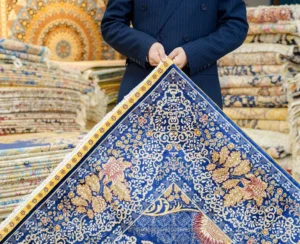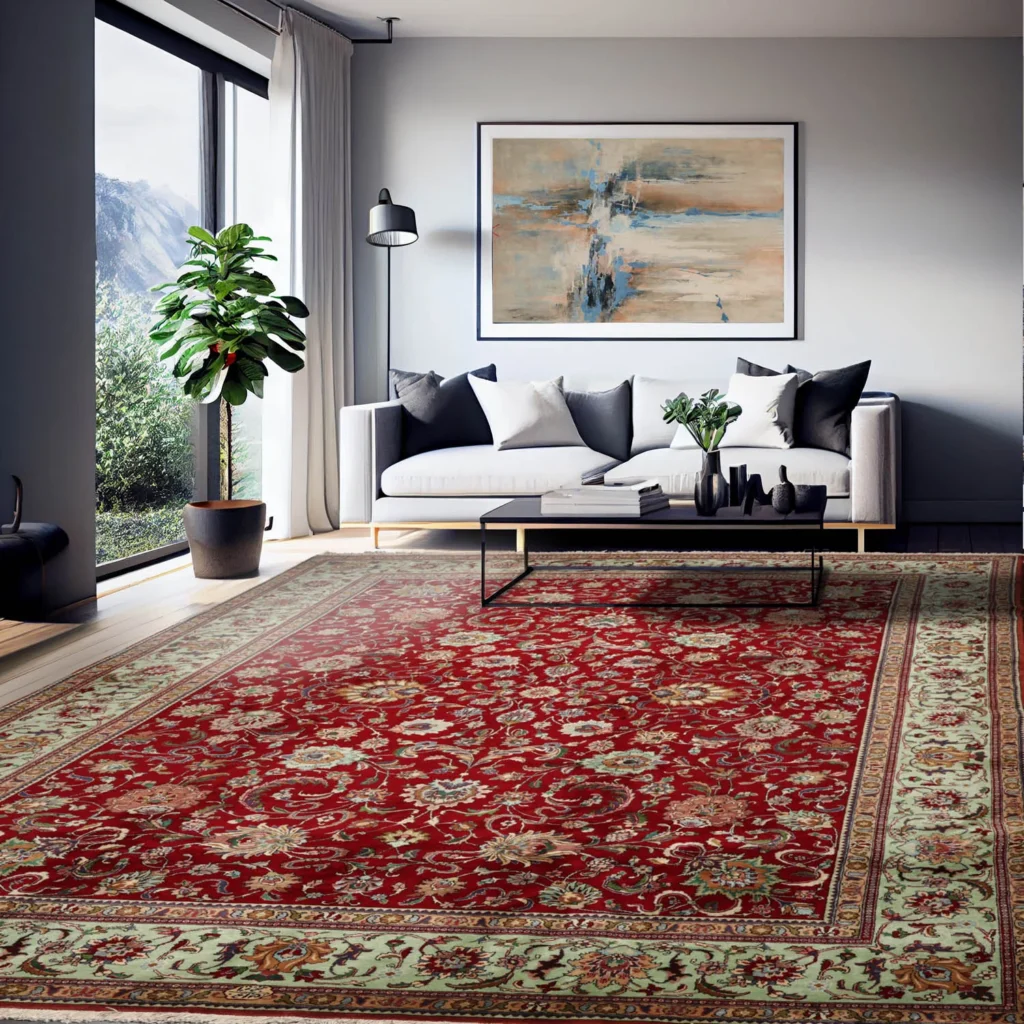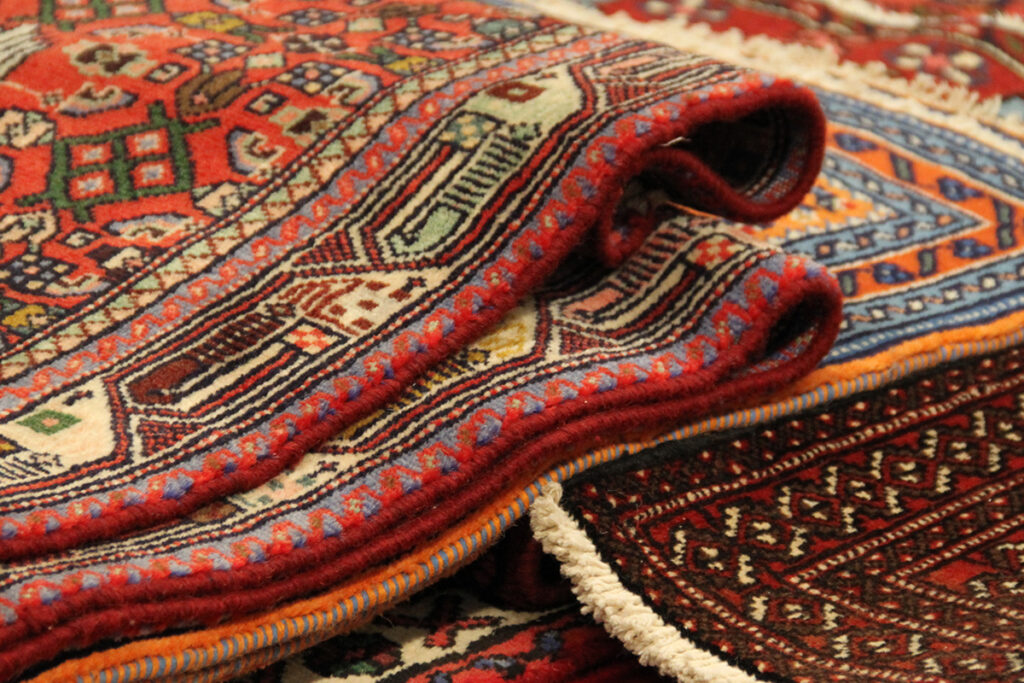Welcome to the enchanting world of Persian and Oriental rugs, where every thread weaves a story of culture and art. These types of rugs are not just floor coverings; they are masterpieces, showcasing the rich heritage and artistic prowess of their makers.
However, there’s often confusion about the differences between Persian rugs and Oriental rugs. Are they the same, or is there more to the story? This article aims to clear up this confusion. We’ll explore the unique characteristics, history, and craftsmanship of both Oriental rugs and Persian rugs.
By the end of this journey, you’ll not only appreciate their beauty but also understand the distinct qualities that make each one special. Join us as we unravel the mysteries behind these exquisite pieces of art.
Historical Origins and Cultural Significance
The Rich History of Persian Rugs
Originating from Iran, Persian rugs are renowned for their deep-rooted artistry. Each rug is a testament to ancient traditions dating back to the Persian Empire, skillfully woven by artisans who have inherited their craft through generations. These rugs embody the cultural heritage of Iran, showcasing intricate designs and patterns that narrate stories from the past.
The Diverse Origins of Oriental Rugs
Oriental rugs encompass a variety of styles from across Asia, including countries like China, India, and Turkey. Each region contributes its unique artistic flair, making Oriental rugs a mosaic of diverse cultural influences. These rugs reflect the artistic diversity of their regions, blending different styles and traditions into each unique piece.

Defining Characteristics of Persian Rugs
Unique Design Patterns and Motifs
Persian rugs are famous for their beautiful and detailed designs. Each rug tells a story with its unique patterns and symbols. These designs often include flowers, vines, and historic symbols. They are not just random; each pattern has a special meaning and reflects the rich culture of Iran, where these rugs come from.Traditional Dyeing and Weaving Techniques
The way Persian rugs are made is also special. Artisans in Iran have passed down their rug-making skills for many generations. They use traditional methods to dye the wool, creating vibrant colors that last a long time. The weaving process is done by hand, knot by knot, which makes these rugs very strong and valuable. This careful process shows the dedication and skill of the rug makers, making each Persian rug a unique piece of art.Key Features of Oriental Rugs
Variety in Styles Across Different Regions
Authentic Oriental rugs offer a global tapestry of designs, originating from diverse regions such as China, India, and Turkey. Each region contributes its unique cultural signature to these rugs, showcasing motifs that range from flora and fauna to intricate geometric patterns. This diversity reflects the rich tapestry of traditions and stories from each area, making Oriental rugs a fascinating and varied category.Material and Construction Differences
The composition and construction of Oriental rugs vary significantly. Commonly crafted from wool, many also feature silk or cotton, lending each piece a distinct texture and durability. The construction techniques differ as well, with some rugs boasting dense, plush piles and others characterized by a flatter, more durable weave. This variety in materials and craftsmanship offers a wide range of options, catering to different preferences and interior design needs.Artistic and Aesthetic Differences
Color Palettes and Symbolism
The color palette of Persian and Oriental rugs is deeply symbolic. While Persian rugs often use rich reds and blues, Oriental rugs might display a wider range of colors, each with its own cultural significance. The designs of Persian rugs reflect the region or city in which they originated, often featuring patterns like a central medallion, an all-over layout, a one-sided layout, and a compartment layout.Artistic Influences and Evolution Over Time
The evolution of rug designs over time reflects the changing artistic influences and societal trends. This evolution is a mirror to the dynamic history of the regions they originate from. Persian rugs, considered by many as the epitome of rug making, often feature higher knot counts and are knotted using a Senneh knot that is asymmetrical, allowing for intricate and highly detailed styles. In Turkey and other Middle Eastern countries, rugs are typically woven using Ghiordes knots, which are symmetrical.Practical Considerations in Choosing a Rug
Durability and Maintenance
When selecting an area rug, consider its durability and maintenance needs. Persian and Oriental rugs, with proper care, can last generations, becoming a cherished part of your home. It’s important to understand that genuine Persian or Oriental rugs must be hand-knotted, a key factor in their longevity and value.
Suitability for Different Home Decor Styles
Whether your home is a canvas of modern minimalism or traditional elegance, there’s a Persian carpet or Oriental rug that can complement your decor. These rugs are versatile and timeless, often featuring contrasting colors in Oriental rugs to emphasize texture, while Persian rugs are usually in warm-toned colors.

The Investment Value of Persian and Oriental Rugs
Factors Affecting the Value of Rugs
The value of Persian and Oriental rugs goes beyond their aesthetic appeal. Factors like age, origin, and craftsmanship play a crucial role in determining their worth. The knot count, for instance, is a critical measure in Persian rugs, where a higher knot count indicates a higher value.
Tips for First-Time Buyers and Collectors
For those new to the world of Persian and Oriental rugs, do your research and take the time to understand their history and characteristics. Remember, it must be a hand-knotted rug in order to be a true Persian or Oriental masterpiece, a factor that significantly contributes to its authenticity and value.
Common Misconceptions and Clarifications
Debunking Myths About Rug Origins and Quality
It’s essential to distinguish between myths and facts when it comes to rug origins and quality. Not all Oriental rugs are created equal, and understanding their provenance is crucial. Any rug woven outside the traditional rug-making countries, even if it has an Oriental or Persian design, is not considered authentic.
Understanding the Market and Pricing
The rug market can be complex, but with the right knowledge, you can navigate it confidently. Learning about the factors that influence pricing will help you make informed decisions. Be wary of rugs labeled as Persian or Oriental but made in Western countries, as these are often area rugs mimicking traditional designs. Take the time to be sure you are acquiring an authentic hand-knotted rug.
The Role of Persian and Oriental Rugs in Modern Interior Design
Blending Traditional and Contemporary Styles
Persian and Oriental rugs can beautifully bridge the gap between traditional and contemporary interior design, adding a touch of elegance and history to any space.
Incorporating these rugs into modern homes can be transformative. For inspiration, exploring case studies and examples can be incredibly helpful. The versatility of these rugs in various interior settings showcases their timeless appeal.
Care and Preservation of Your Rug
Best Practices for Maintenance
Proper care and maintenance are key to preserving the beauty and longevity of your Persian or Oriental rug. Regular cleaning and mindful handling will ensure its lasting charm.

Professional Cleaning and Restoration Tips
For best results, turn to the professionals at HammondKnoll. We specialize in whole-home cleaning and restoration, offering expert care for your cherished rugs. Our methods are tailored to preserve the integrity and beauty of each unique piece.

About HammondKnoll
At HammondKnoll, we pride ourselves on our expertise, attention to detail, and problem-solving skills. Whether you’re a first-time buyer or a seasoned collector, we’re here to offer expert advice and care for your Persian and Oriental rugs. Our friendly, positive, and welcoming approach to cleaning your home’s interior ensures that every interaction with us is as enriching and comfortable as the rugs we care for. Contact us today to keep your treasured rugs and carpets looking their absolute best.

